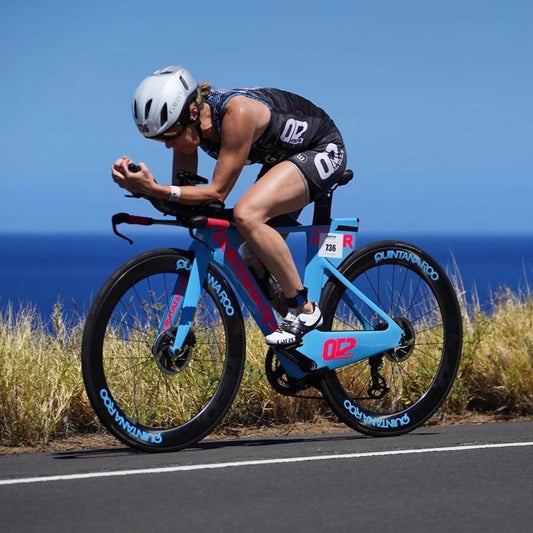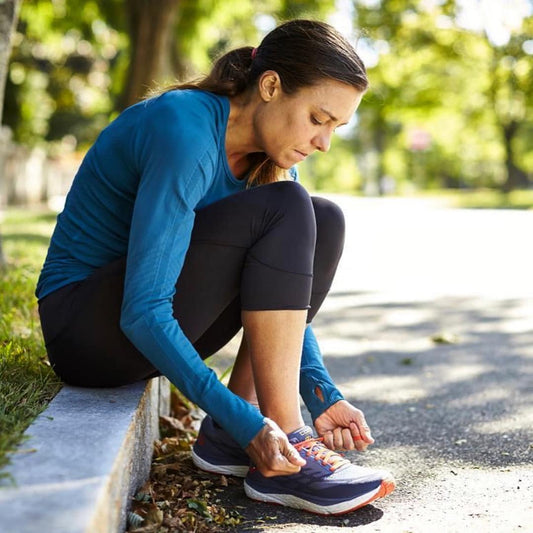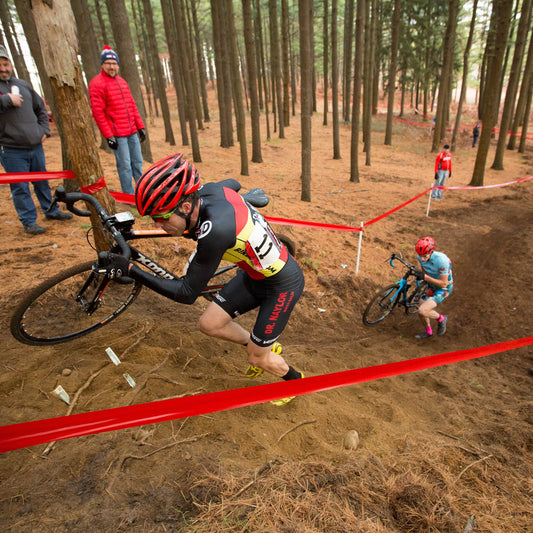
As a high school and collegiate hurdler many moons ago, I trained to sprint, maneuver, stretch, eat, sleep and breathe everything with “hurdles”. I was my fastest and most flexible during this time of my life. Of course, youth and the specificity of being a sprinter and power-based athlete made me fast, but also, the hurdle drills and mobility routines I performed developed me into a more efficient runner, which meant “faster”. This hip mobility work molded coordinated movement patterns, improved my rotational balance and agility, and strengthened my core and lower body all while requiring my hips to develop fluidity, flexibility and a great range of motion.
As a professional triathlete much later in life, I couldn’t resist a visit to the hurdles, whenever I frequented the track arena for a workout. The old hurdle drills that made me on top of my game in the late 1980s; still again, held value, but in a different context as an endurance athlete 30 years later.
As we age, we tend to lose hip mobility. As endurance athletes, training event specificity will “turn off”, or disengage, our hips due to long hours spent swimming, biking and running. In addition, sitting at our desks or commuting in our vehicles will tighten up our soft tissue in our hip regions and wreck havoc with our ability to stay mobile, strong and flexible in this area.
I often send my athletes to the track to do routine fartlek, over/under, benchmark and speed work during certain times in their training. It is common that during these trips to the track, I will also request that my athletes do some variation of hip work in the form of hurdle drills. It is a great way to develop an athlete’s lumbar-pelvic-hip mobility in a dynamic way that will fit well into activation and warm-up work before any type of isolated run session. It increases overall mobility, coordination, strength and range of motion, which in turn will contribute to improved run efficiency and injury prevention.
Here is a fun “blast from the past” hurdle mobility routine that will get athletes’ hips engaged and warmed up! It is recommended that athletes start with shorter hurdles and work their way up to higher as they improve.
QT2 Hurdle Hip Mobility Circuit
Two times through each. Make sure to repeat on the opposite side. To modify, substitute elementary hurdles if 30 inches is too high.
Setup
Line up six to 10 hurdles back-to-back, and high enough so that walking over them is a challenge but not a struggle.
- Step over first hurdle; step under next. Repeat pattern. All right.
- Step over first hurdle; step under next. Repeat pattern. All left.
- Step over first hurdle; step under next. Repeat pattern. All right.
- Lateral side step overs right (knee up).
- Lateral side step overs left (knee up).
- Lateral side lead kick overs right (kick).
- Lateral side lead kick overs left (kick).
- Right, left forward- touch right – right, left backward - left, right forward - touch left – left, right back (repeat)
- Big alternative step overs forward.
- Big alternating step overs backwards.
- Alternating side lunges.
Adaptation
To modify, hands are free. For advanced, place hands locked together overhead or hold a medicine ball overhead.
Coaching Points
Keep proper posture throughout. Feel the movement through each leg. Be mindful of what the drill is requiring the body to do. Chest tall, proper posture, and arms and head are still, unless indicated. Smooth and fluid movement, find your rhythm. Activate gluteus when squatting under the hurdle.
This post was written by QT2 Level 2 Coach, Amy Javens.





